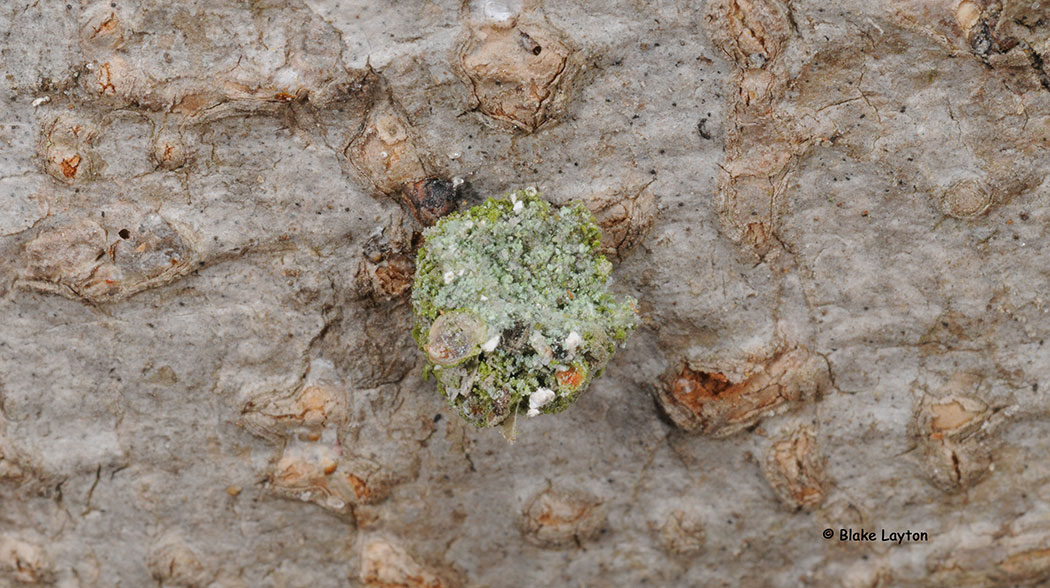Debris-carrying Lacewing Larva Vol. 2, No. 19

Several species
Order: Neuroptera
Family: Chrysopidae
It moved; that piece of lichen is moving! It always comes as a bit of a surprise when one first notices a debris-carrying lacewing larvae moving along the trunk of a lichen-covered tree in its slow, jerky motion. If you flip that piece of debris over, you will see that it has legs and a head with large mandibles. These are the larvae of certain species of green lacewings. As the name suggests, adults are usually green with lacy, net-like wings. Although the larvae of many species of green lacewings are naked, with elongated, alligator-shaped bodies and large, sickle-like, hollow mandibles, others exhibit this debris-carrying trait. The debris they carry may be lichens and other bits of plant debris, but it often consists of the bodies of past prey, such as aphids, that have been sucked dry of their contents. Obviously this provides excellent camouflage to protect the larvae from large vertebrate predators such as birds, but some studies have shown that carrying the bodies of dead aphids on their back helps these larvae evade detection by ants that are tending and protecting the colonies of aphids they prey on. These are truly stealth predators.
Lacewing larvae feed on aphids and other small, soft-bodied insects by simply walking up to them and clamping them between their large curved mandibles. The mandibles are hollow and are used to inject strong saliva into the prey insect that digests and liquefies its body contents. This “bug soup” is then sucked up through the hollow mandibles. Lacewing larvae do sometimes bite people, especially if they are accidentally pressed against a tender area of skin. The bite is not serious but only causes a mild, short-lived stinging sensation due to the saliva they inject.
Blake Layton, Extension Entomology Specialist, Mississippi State University Extension Service. The information given here is for educational purposes only. Always read and follow current label directions. Specific commercial products are mentioned as examples only and reference to specific products or trade names is made with the understanding that no discrimination is intended to other products that may also be suitable and appropriately labeled.
Sign up to receive Bug's Eye View

